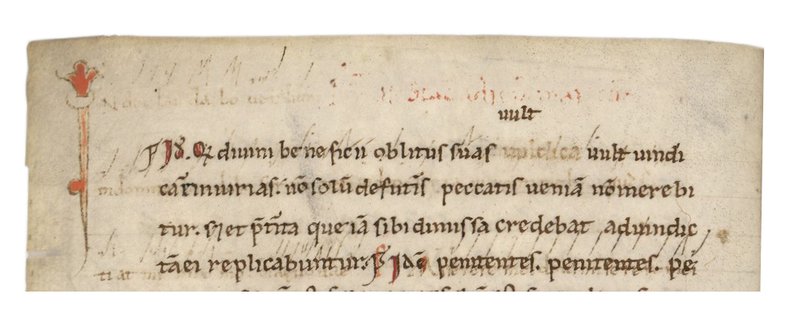The objects of MusRes are palimpsest manuscripts containing musical notation dating from the 9th to 12th centuries (ca. 850–1150).

The medieval 'recycling' often completely obliterated the original content, making an impressive corpus of earliest written vocal music inaccessible to scholars and performers.
Due to their difficult legibility, palimpsests have often passed unnoticed, or remained unidentified. Therefore, the full extent of surviving musical palimpsests is not yet known. From a preliminary survey, at least 30 palimpsests that fall into the project's remit have been identified but only a very restricted number of them have been studied systematically.
MusRes aims to create a permanent DATABASE, which will feature all data collected in the survey.
Each entry will include the following information: location (library/archive/institution), shelfmark, codicological information (n. of folios, dimension, state of preservation), content/s, dating, type of musical notation, bibliography and links to digital resources. The relevant MARC description fields (https://www.loc.gov/marc/bibliographic/ecbdlist.html) will be used for extensibility, data sharing and web-services. The database will be public, searchable, and browsable, allowing different levels of consultation. The wider community of users will be able to submit new palimpsest sources via a moderated system. The data collected in the database will complement existing on-line resources like MMMO, Cantus, or Gregorien.info.
This period also corresponds to the first emergence of books dedicated to music: the earliest surviving books containing the notation for chants for the Mass date to ca. 900, while the earliest complete compilation for the chants of the Divine Office come from the late 10th c. The 11th c. saw the codification of further types of music books, as well as the introduction of the musical staff, which allowed melodies to be reproduced as more than simply a mnemonic for a tune the singer already knew; an innovation that had a considerable impact on the position occupied by music on the written page. The time span, which covers a crucial phase in the history of European music, will also allow the observation of patterns of development in the production of written musical media over three centuries. Moreover, the presence of at least two different registers, usually the verbal and the musical text, made the written artefact a multimedia and multi-layered object that could be accessed with different levels of literacy. The study of contents' organisation and production techniques of early medieval chant books provides insights into how cultural manifestations such as religious worship and ritual were preserved and transmitted in a material object.